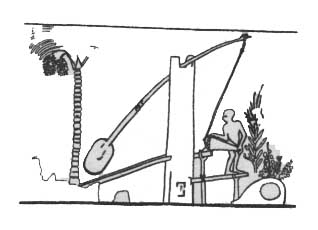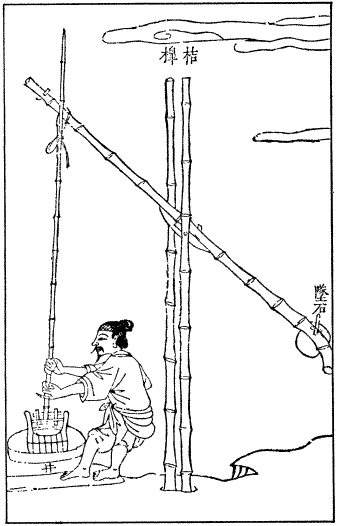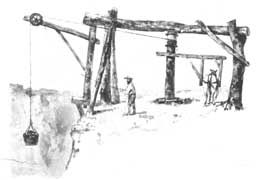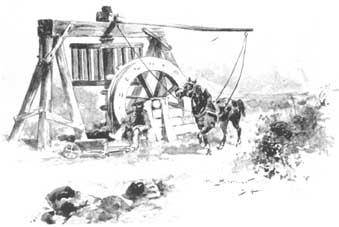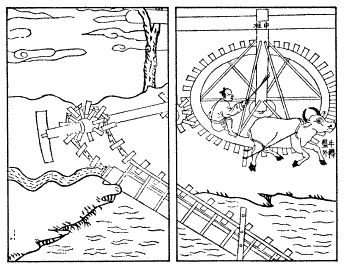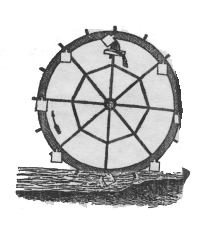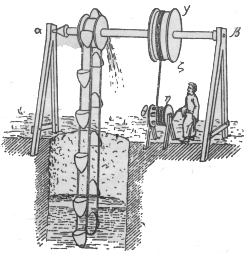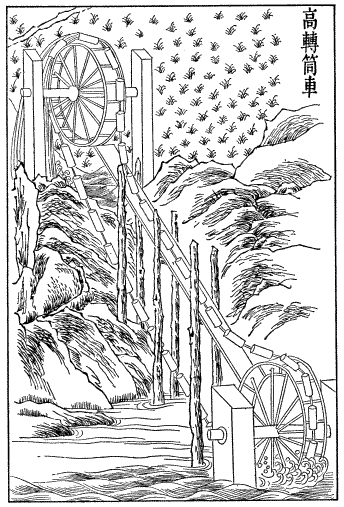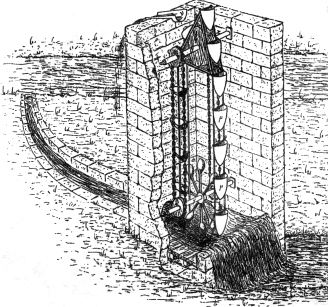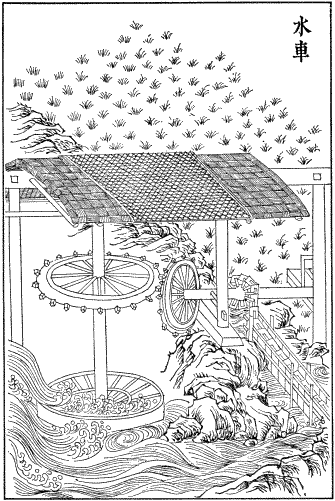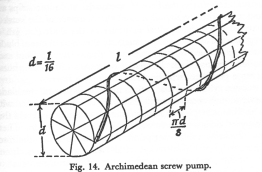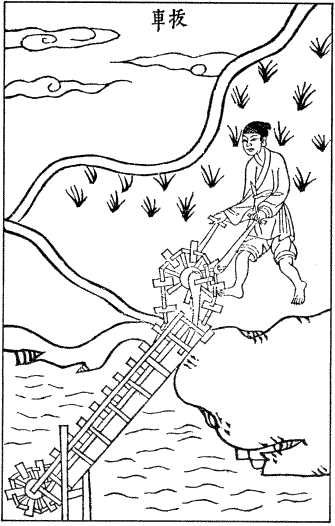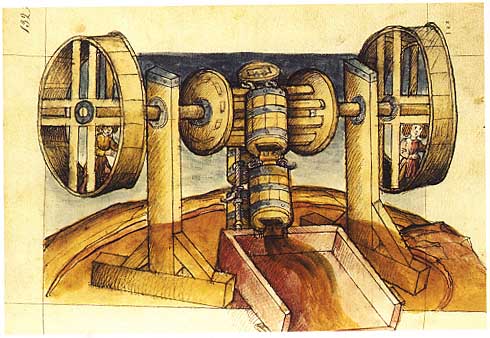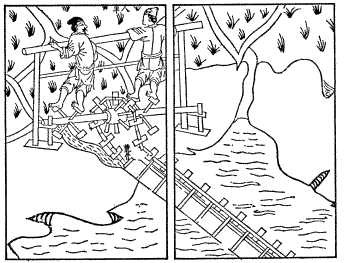|
(a-1-19)
|
|
A lever -- the shaduf --
the earliest device for lifting water was used in Egypt to transfer
water from the Nile into irrigation ditches. This lever, with a
fulcrum about five feet high, atop a short beam on two poles, contained
a bucket on one end and a counterpoise on the other. One dipping,
filling and emptying shaduf could move about 600 gallons a day to
a height of about six feet. The levers were often used in a series
to elevate water to still higher levels. First to challenge this
balance device was likely the continous chain of buckets used in
the famed hanging gardens of Babylon -- one of the Seven Wonders
of the World. (Graphic Source: A History of Mechanic Inventions) |
|
(a-1-20)
|
|
(a-1-27.gif)
|
|
Chinese peasants living along the
Yellow and Yangtse Rivers emulated those along the Nile, dipping
the most precious commodity of the era -- water -- from
the rivers into irrigation channels. The counterweighted lever in
China was uniquely constructed of bamboo, native to the region.
(Graphic Source: Chinese Technology in the 17th Century) |
|
 |
(a-1-8)
|
| Rough-hewn timbers were combined
with windlass, rope and pulley, making it possible to raise water
from a well or an inaccessible river. Sans water or wind power,
the lifting was accomplished by human or animal power. |
|
|
|
Whereas the animal in the previous
graphic applied its power to a tree trunk being used as a windlass,
in this picture, the horse is multiplying its power through the use
of wooden gears. Although water was lifted in this instance, the
load could just as easily have been timber, stone or cargo.
|
|
 |
(a-1-24.gif) |
| A water buffalo turns the sprocket
wheel that, through gearing, brings the water through the pipe to
the irrigation channel. In the Far East, as in the Middle East,
nothing was more important than lifting water to grow crops --
mostly grains -- season after season. (Graphic Source: Chinese
Technology in the 17th Century) |
|
 |
(a-1-18)
|
| The norea, introduced before the
Christian era, was fitted with pottery buckets that pivoted freely.
Such wheels were constructed up to 40 feet in diameter, and though
rarely driven by water power, they could be operated as undershot
wheels as in the illustration. The norea represented the earliest
application of water power. When precious liquid had to be lifted
to greater heights, two wheels were involved with connected bands
upon which the buckets were connected. (Graphic Source: A History
of Mechanical Inventions) |
|
 |
(a-1-17)
|
A chain of pots was often used
to raise water from a well. This graphic depicts a worker at a crank
and windlass. It is doubtful that animal power drove such devices
prior to the Christian era. In this rendering, an endless belt from
the windlass to the upper sheave would have been more appropriate.
(Graphic Source: A History of Mechanical Inventions) |
|
 |
(a-1-21.gif)
|
| In China, cross-cut sections of
bamboo became buckets, to be caught by the current, filled and emptied
into an irrigation ditch. Sections of bamboo cut longitudinally
served very well as troughs. (Graphic Source: Chinese Technology
in the 17th Century) |
|
(a-1-22.gif) |
 |
(a-1-16)
|
| Philo of Alexandria's undershot
wheel had fixed pots that made better use of the current's force
and probably could deliver water to greater heights. (Graphic
Source: A History of Mechanical Inventions) |
|
 |
(a-1-23.gif) |
| Alongside a Chinese river, current
drives a horizontal water wheel that turns sprocket gears lifting
a chain of plungers -- and water -- for emptying into an
irrigation ditch. (Graphic Source: Chinese Technology in the
17th Century) |
|
 |
(a-1-15)
|
| The Archimedium screw or cochlea
(as termed by the Romans), although known by the Greeks, was standard
equipment in the Roman mines. The Greek word mechane (machine) is
frequently used in connection with irrigation and probably referred
to the screw and its counterpart, the drum or norea. (Graphic
Source: Engineering in the Ancient World) |
|
 |
(a-1-26.gif) |
| A form of push-pull crank drags
plungers up through a pipe to bring a continuous flow of water.
(Graphic Source: Chinese Technology in the 17th Century) |
|
 |
(a-1-4)
|
| The requirement
for irrigation fostered the treadmill described by Philon De Byzance
in 3rd century BC. It featured dual treadmills on an axis with
a slatted wheel which moved a series of water buckets. (Graphic
Source: Elevators Through the Ages) |
|
 |
|
| Two
Chinese farmers turn a treadle wheel that brings water upward through
a pipe. (Graphic Source: Chinese Technology in the 17th Century) |
|
 |















